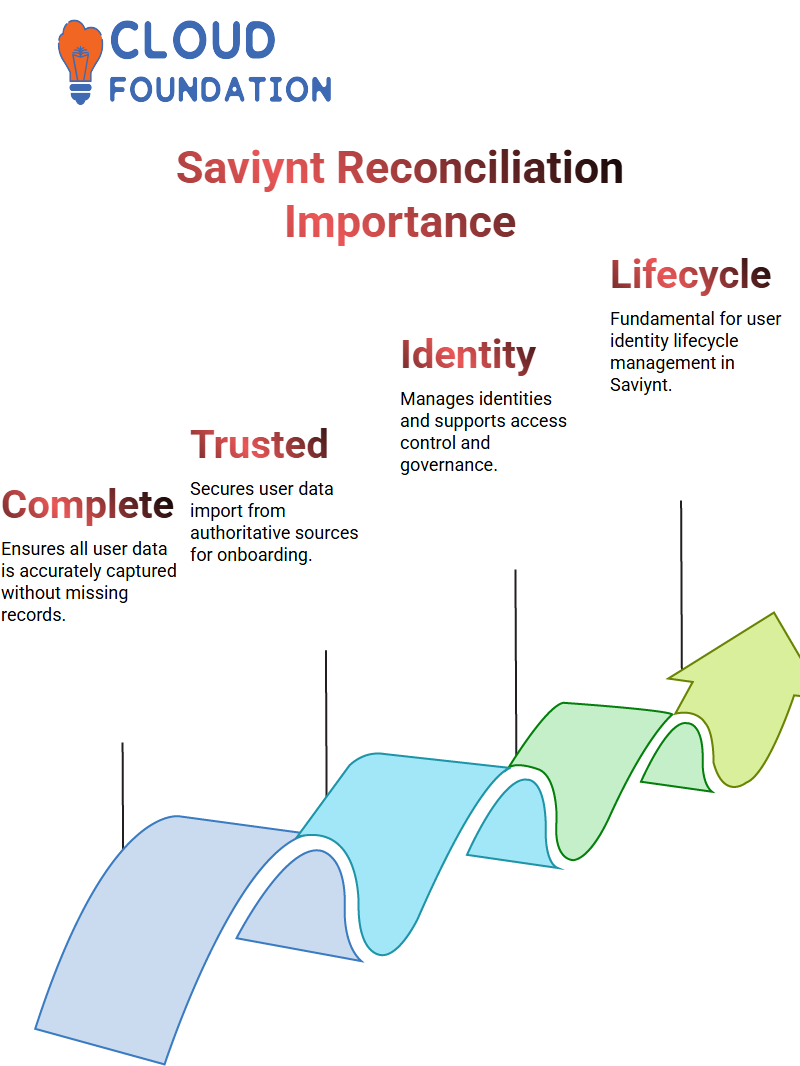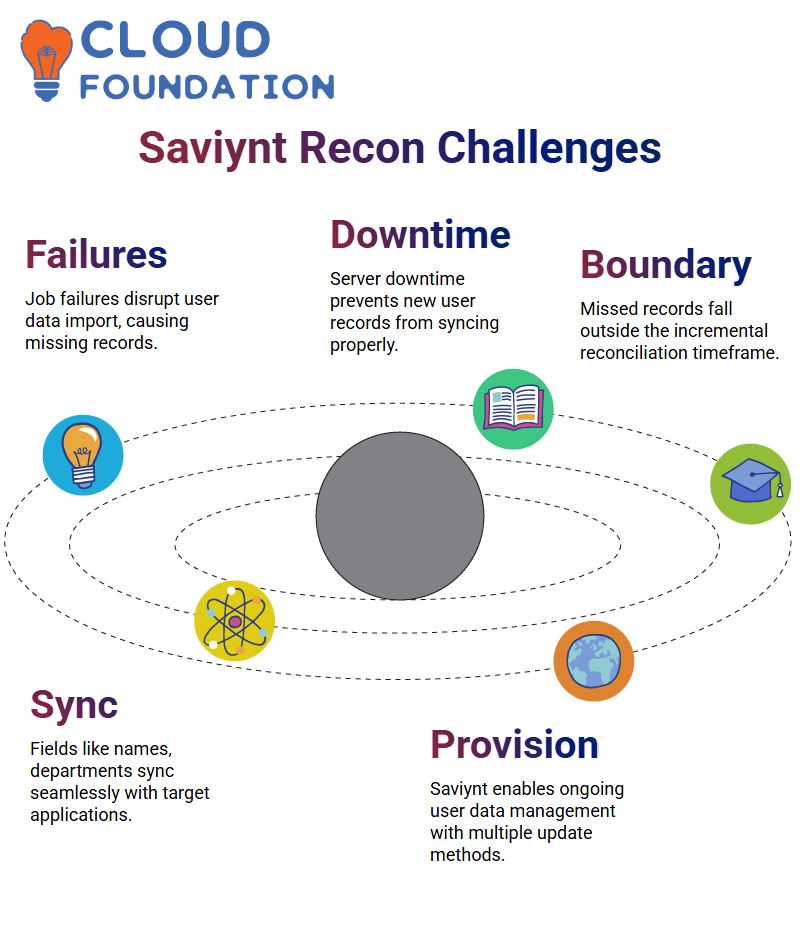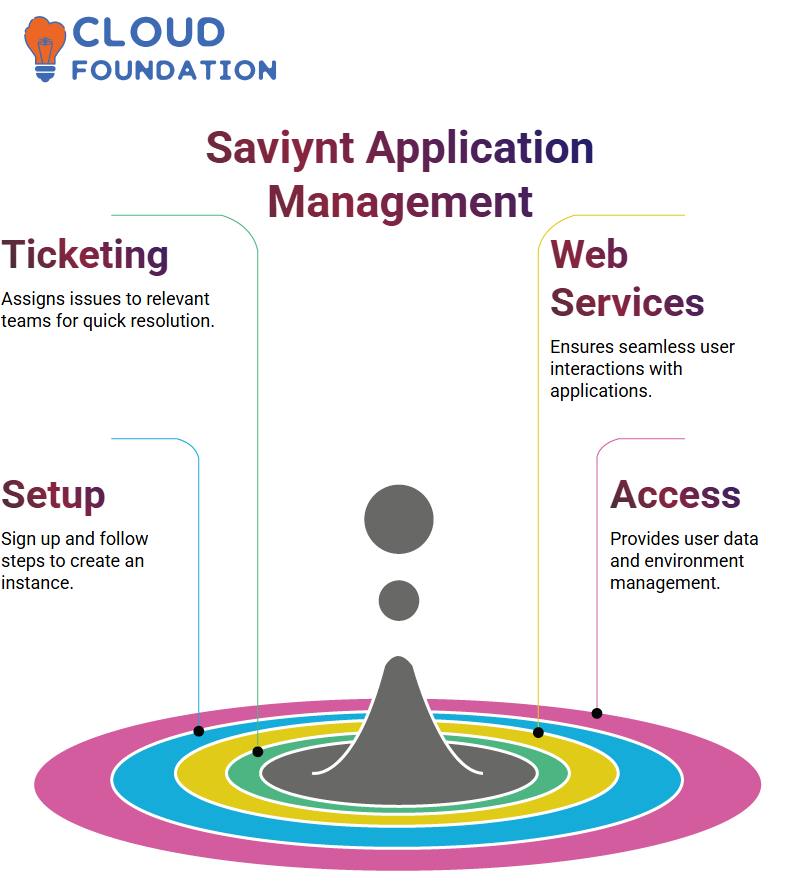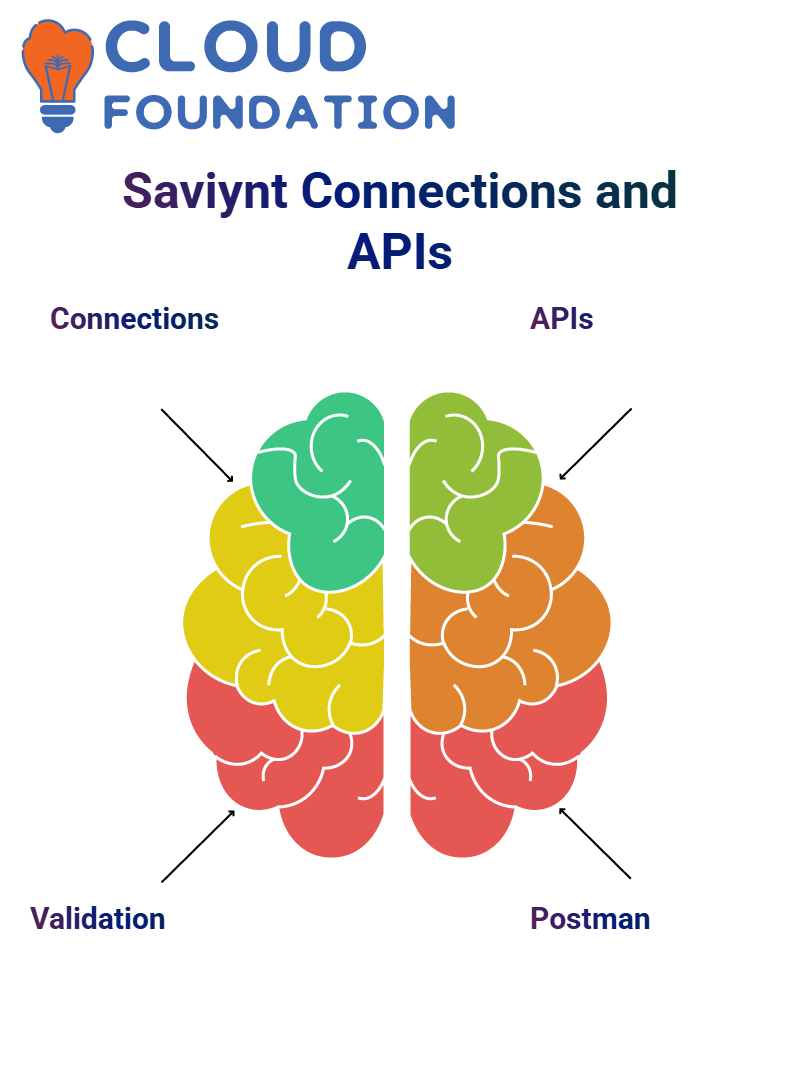What is Full Reconciliation in Saviynt? | Role of Web Services in Saviynt
Getting Started with Saviynt
Saviynt has revolutionised identity governance. If access management has ever been complex for you, know that you’re not alone – Saviynt makes the process seamless and secure!
Let’s consider raising an incident with Saviynt: the process begins by accessing your dashboard, where all instances can be seen at once.

Saviynt makes raising an incident easy with its clear and structured approach, whether troubleshooting an issue related to guides or access configuration, or configuring security.
Authenticating in Saviynt
Saviynt makes authentication an integral component of its service, ensuring the proper credentials are in place to log on successfully and log out quickly in case any login problems arise due to missing parameters.
However, its documentation quickly addresses these issues.
Before proceeding with any new instance URLs, I ensure that the username and password authentication system is configured appropriately and provide an efficient method for managing permissions and roles.
The system has proven its worth numerous times.
Securing Connections in Saviynt
Saviynt authentication is an integral process.
While basic credentials, such as username and password, may be sufficient for basic access control purposes, more robust protection can be achieved by using client credentials and secret tokens from clients or Secret Tokens provided to clients by Saviynt API services, which require application/json content types in headers to maintain data consistency and integrity throughout their flow.
It restores connectivity, demonstrating how Saviynt effectively handles firewalls and security measures to maintain the robustness of an API.
Their design prioritises user experience, even as I add complex parameters like brand type, plant IDs, or unique attributes to request bodies.
Understanding Saviynt Full Reconciliation
Saviynt often advises complete reconciliation over incremental reconciliation for this reason: Imagine you have 100 users listed in your database or HR system on day 1.
A full import would import all of them; an incremental reconciliation process would only fetch and update information regarding those five newcomers, as well as updates to existing user information, on the second day.
But while this process seems efficient at first glance, its efficiency could be compromised should a job stop prematurely or the server be experiencing downtime; during such times any users created in that period might not get captured in complete reconciliation’s records – an approach designed to ensure no user records have been missed even if previous runs experienced delays or interruptions.
Why Saviynt Prefers Full Reconciliation
Saviynt recommends complete reconciliation when handling user imports.
While incremental reconciliation works for minor updates, complete reconciliation ensures that no data is missed and that each record from previous jobs is captured accurately, even if those previous jobs encountered issues.
Complete reconciliation may take longer, but its implementation in critical systems where data accuracy is of utmost importance makes perfect sense.

Saviynt’s preference for complete reconciliation makes ideal sense.
Understanding Trusted Reconciliation in Saviynt
Saviynt plays a crucial role in managing identities.
Trusted reconciliation within Saviynt refers to the secure import of user data from an authoritative database source into our system, ensuring accurate and authoritative onboarding for our users.
Trusted reconciliation in Saviynt is crucial for identity lifecycle management, serving as the foundation for access control and governance.
Each user in Saviynt originates from this authoritative source, making this foundational component crucial.
Target Reconciliation in Saviynt
Saviynt offers both trusted reconciliation and target reconciliation; target reconciliation involves overseeing accounts across different applications created using user information stored within Saviynt.
Saviynt ensures seamless coordination between its internal user profiles and external applications, guaranteeing each identity is provisioned effectively.

Recon Jobs in Saviynt
Saviynt automates its reconciliation process using various job mechanisms. As new users join Saviynt, reconciliation jobs help ensure an effortless onboarding experience.
Tracking data imports ensures accurate user records while permitting incremental updates to remain up to date and correct.
Saviynt and Incremental Reconciliation
Saviynt supports incremental reconciliation for applications, enabling faster and more cost-efficient updates.
Some legacy applications that initially did not support incremental reconciliation may now permit this approach, with some special considerations required.
Incremental reconciliation in Saviynt can save both time and system resources by maintaining efficient operations.
By only importing large data volumes when updates occur, incremental reconciliation keeps operations efficient and fast.
How Saviynt Handles Incremental Reconciliation
Saviynt employs a timestamp-based reconciliation methodology for incremental reconciliation purposes.
Each user record includes an indication of when it was last changed. Then, the system retrieves records created or modified within a specified time frame.
For instance, if users updated in the last 24 hours are selected as targets, only recent modifications are captured by this system.
However, problems arise when jobs fail to run according to schedule.
If the task is supposed to fetch data every 12 hours but gets delayed for two days instead, users created during that interval may not be picked up and may fall outside its timestamp boundaries.
Due to this constraint, complete reconciliation should often be considered the more prudent course, protecting user data within Saviynt.
The Challenges of Incremental Recon in Saviynt
Job failures are one of the primary obstacles to incremental reconciliation in Saviynt.
When one fails, user data from affected periods is not imported into the system, resulting in missing records that can cause problems for teams that rely on accurate information.
Imagine eight new users were added to your system but, due to server downtime, their job failed for two days without being successfully run.
 These eight users would likely not be picked up during incremental reconciliation because their records fall outside the time boundary; complete reconciliation is recommended as it gathers all documents regardless of when they were created or updated.
These eight users would likely not be picked up during incremental reconciliation because their records fall outside the time boundary; complete reconciliation is recommended as it gathers all documents regardless of when they were created or updated.
Saviynt’s Provisioning Capabilities
Provisioning in Saviynt also stands out from full imports and incremental updates, as it enables the management of user data for ongoing updates over time.
Saviynt supports various methods for maintaining accurate user information, ensuring data flows smoothly from trusted sources to target systems.
Saviynt simplifies data management by enabling users to easily select specific fields, such as first name, last name, department name, and update dates, which sync seamlessly with target applications.
This precision simplifies data management while increasing system reliability.
Saviynt Integration with Target Applications
Saviynt offers seamless integration with various target applications in real-world scenarios.
If you work within an enterprise setting, when an employee joins Saviynt as their login gateway, they gain access to multiple applications via this portal.
Imagine this: you want to integrate Active Directory (AD) and/or LDAP as target applications into Saviynt.

Saviynt serves as the glue, managing account details efficiently across platforms and creating a seamless user experience across applications that house those details, all of which are efficiently handled by Saviynt.
Understanding Saviynt’s Role in Web Services
Do you ever wonder how web services like Saviynt help simplify the creation and consumption of applications? I have, so let me provide an example imagine having to build technology from scratch for your company, which would likely seem overwhelming and time-consuming.
That is where Saviynt comes into play — streamlining processes like user onboarding in HRMS applications becomes manageable with Saviynt, while saving both time and effort.
Saviynt serves as the backbone of your company, offering social-like functions for employees. Team members can use the Saviynt platform to share recognitions, thoughts, updates, etc.
The result? An employee collaboration environment.
Saviynt Makes Application Building Easier
Saviynt stands out by taking away the complexity of building apps from scratch. Instead, Saviynt provides ready-to-use APIs that mimic popular platforms, such as Facebook.
With Saviynt APIs, you can focus on functionality without worrying about infrastructure.
From creating accounts and updating profiles to managing user data efficiently and painlessly, Saviynt makes everything simpler with ease.
How Saviynt Reduces Costs and Effort
Let’s face it — building applications can be costly. Still, Saviynt makes it much less so by providing APIs and Web Services that eliminate the need for servers or professional coders, offering tools that make data management effortless.
Saviynt ensures companies do not spend an excessive amount on infrastructure. Efficiency is at the heart of Saviynt: you save time, cut costs, and can focus on what matters.
Saviynt for Everyday Application Management
Are your company applications giving you headaches? Saviynt offers solutions through its ticketing system and managed application services to address them quickly.
When employees encounter an issue, Saviynt streamlines the process by assigning tickets directly to the relevant departments for resolution.

Saviynt web services ensure seamless interactions between employees and applications, providing reliable contact points to address any issues quickly and maintain efficient operation.
Setting up Saviynt Developer Instance
Let me walk you through setting up the Saviynt developer instance. First, click on the sign-up button. After entering your email and following the instructions to create your account, the Saviynt instance building should begin. It might take time, but hold tight – you won’t regret it!
Once your Saviynt instance is up and running, you’ll find an effortless way to access user data and other details related to them.
Saviynt provides easy management access, allowing your environment to run efficiently.
Using Postman for Saviynt API Integration
As part of your efforts to maximise Saviynt APIs, I highly suggest Postman. It’s a fantastic tool that streamlines API testing and integration.
Installation is straightforward: download it, double-click to install, and you’re set.
Postman provides an effortless method for testing Saviynt APIs.

From checking connectivity and exploring operations to examining the services offered, Postman ensures everything runs smoothly, giving robust applications explicitly tailored to your company’s requirements with each Saviynt API.
Ensuring Successful Integration with Saviynt APIs
Before proceeding with real-time integration, Saviynt APIs must be thoroughly tested using Postman, which provides fast and precise results, ensuring the correct functioning of each API.
Once your API has proven itself to be reliable, integrating it with Saviynt becomes a stress-free and straightforward process. Proper setup and testing are key elements to realising Saviynt’s full potential.
Saviynt Instance and User Management
Saviynt makes managing users easy: after your instance has been set up, accessing its admin credentials gives you access to create user accounts as needed.
Saviynt makes it effortless for you to create, view, and manage all instances, providing maximum flexibility so that you can adapt easily to changing requirements while optimising the use of your environment.
Optimising Saviynt Connectivity
Saviynt’s robust connectivity options enable easy integration of APIs and external applications, using Postman to test connections to ensure seamless operations without hiccups or breakdowns.
Note that Saviynt requires appropriate JSON configurations to create users and perform other operations efficiently. Take the time to master the connectivity process to maximise efficiency.
Configuring Connections in Saviynt
Establishing connections is central to working with Saviynt. From the moment I log onto their portal, I explore their document repository in search of relevant connection details.
Within mere clicks, all is set up and ready to go.Test these connections before proceeding.
 I always ensure the credentials have been correctly configured when integrating Saviynt with external apps; by following simple authentication steps, any connectivity issues become obsolete.
I always ensure the credentials have been correctly configured when integrating Saviynt with external apps; by following simple authentication steps, any connectivity issues become obsolete.
Using APIs with Saviynt
Saviynt provides powerful APIs that facilitate easy integration. I begin my experience by opening Postman, inspecting my workspace, and validating requests.
Whether I am creating new collections or making API calls, the process remains efficient and seamless.
Saviynt stands out by effortlessly onboarding users through API changes; new accounts can be quickly created, and their credentials can be safely stored this feature makes identity management much simpler.
Exploring Saviynt REST API for User Creation
As soon as I open a user table in Saviynt, my immediate attention is drawn to exploring the REST API this tool in Saviynt has proven invaluable when creating and managing tables.
Once there, Saviynt provides its own defined REST APIs; I decided to dive right in and discover just how these function.
For instance, I found that this API allows me to either retrieve records from Saviynt cases or create new records myself.
Creating records with Saviynt is straightforward: I clicked ‘Create Record’ and noticed that it required parameters in application/JSON format.

After inputting my CT value for Karnataka, as well as my company information, such as email and details related to other specifics, I could begin adding records via its efficient API framework.
Using Saviynt to Expand User Data
Every time I press ‘Send’ and create records successfully, Saviynt uses this as a record number in the status, making this progress visible by instantaneously updating user counts with this success. It’s satisfying to see them increase.
Saviynt provides an efficient and secure connection through tokens, such as the X-user token, to prevent malicious activities during user creation and authentication.
By offering this token, Saviynt guarantees that requests remain encrypted and secure. Every piece of data I enter, whether it’s email, gender, or any other information, seamlessly integrates into its system.

Vinitha Indhukuri
Author



